Test Bank for The Art of Public Speaking, 10th Edition : Lewis
$35.00
Test Bank for The Art of Public Speaking, 10th Edition : Lewis
You will receive this product immediate after placing the order
The Art of Public Speaking
The Art of Public Speaking Lewis
The Art of Public Speaking Lewis 10th
The Art of Public Speaking Lewis 10th Test Bank
Test Bank for The Art of Public Speaking, 10th Edition : Lewis Download
*** YOU ARE BUYING the Test Bank ***
Name: The Art of Public Speaking
Author: Lewis
Edition: 10th
ISBN-10: 0073385158
ISBN-13: 978-0073385150
Type: Test Bank
– there’s a very high chance that you will see a very similar, if not exact the exact, question in the test!
–
– .
We also faced similar difficulities when we were students, and we understand how you feel.
But now, with the The Art of Public Speaking 10th Test Bank, you will be able to
* Anticipate the type of the questions that will appear in your exam.
* Reduces the hassle and stress of your student life.
* Improve your studying and also get a better grade!
* Get prepared for examination questions.
* Can save you time and help you understand the material.
This is the quality of service we are providing and we hope to be your helper.
Test Bank is accurate.
Prepare to receive your The Art of Public Speaking 10th Test Bank in the next moment.
ISBN-10: 0073385158
ISBN-13: 978-0073385150
If you have any questions, or would like a receive a sample chapter before your purchase, please contact us at [email protected]
The Art of Public Speaking
The Art of Public Speaking Lewis
The Art of Public Speaking Lewis 10th
The Art of Public Speaking Lewis 10th Test Bank
Test Bank for The Art of Public Speaking, 10th Edition : Lewis Download
ch1
Student: ___________________________________________________________________________
1. The teaching and study of public speaking began more than 4,000 years ago.
True False
2. Public speaking requires the same method of delivery as ordinary conversation.
True False
3. As your textbook states, public speaking is a form of empowerment because it gives speakers the ability
to manipulate people.
True False
4. Public speaking usually requires more formal language than everyday conversation.
True False
5. Public speaking is more highly structured than everyday conversation.
True False
6. When you adjust to the situation of a public speech, you are doing on a larger scale what you do everyday
in conversation.
True False
7. As a speaker, you can usually assume that an audience will be interested in what you have to say.
True False
8. Communication skills, including public speaking, are often ranked first among the qualities employers
seek in college graduates.
True False
9. Fortunately, stage fright only affects inexperienced speakers.
True False
10. Thinking positively about your ability to give a speech is one way to control your anxiety about
speaking.
True False
11. It has been estimated that being fully prepared for a speech can reduce stage fright by up to 75
percent.
True False
12. Research has shown that for most speakers anxiety decreases significantly after the first 30 to 60 seconds
of a speech.
True False
13. Using the power of visualization to control stage fright means that you should approach your speech as a
performance in which the audience is looking for perfection.
True False
14. Most successful speakers are nervous before taking the floor.
True False
15. Listeners usually realize how tense a speaker is.
True False
16. Some nervousness before you speak is usually beneficial.
True False
17. Many of the symptoms of stage fright are due to adrenaline, a hormone released into the bloodstream in
response to physical or mental stress.
True False
18. Thinking of stage fright as “stage excitement” or “stage enthusiasm” can help you get focused and
energized for a speech.
True False
19. For most beginning speakers the biggest part of stage fright is fear of the unknown.
True False
20. As your textbook explains, most of the nervousness public speakers feel internally is not visible to their
listeners.
True False
21. Speakers who think positively about themselves and the speech experience are more likely to overcome
their stage fright than are speakers who think negatively.
True False
22. It is usually a bad idea to make eye contact with individual members of your audience.
True False
23. In many aspects of public speaking you will employ the skills of critical thinking.
True False
24. Organizing ideas for presentation in a speech is an important aspect of critical thinking.
True False
25. Critical thinking is a way of thinking negatively about everything you hear in a speech.
True False
26. Practicing speech delivery is one of the most important ways in which public speaking helps develop
your skills as a critical thinker.
True False
27. The channel is the room in which speech communication takes place.
True False
28. The channel is the means by which a message is communicated.
True False
29. Your goal in public speaking is to have your intended message be the message that is actually
communicated.
True False
30. A speaker’s frame of reference and a listener’s frame of reference will never be exactly the same.
True False
31. Most of the time the listener’s frame of reference is identical with the speaker’s frame of reference.
True False
32. Most public speaking situations involve two-way communication.
True False
33. When you give a speech to your classmates, you are engaged in one-way communication.
True False
34. The nonverbal messages that listeners send back to speakers are called feedback.
True False
35. Interference is anything that impedes the communication of a message.
True False
36. As your textbook explains, the speaker’s message consists only of what the speaker says with
language.
True False
37. Because most people share the same frame of reference, the meaning of a message is usually the same to
a listener as to a speaker.
True False
38. Interference can come from either inside or outside your audience.
True False
39. Speechmaking becomes more complex as cultural diversity increases.
True False
40. Although language changes from culture to culture, the meaning of nonverbal signals is consistent across
cultures.
True False
41. Ethnocentrism is an advantage to speakers who seek to understand the values, beliefs, and customs of
audiences from different cultures.
True False
42. Ethnocentrism often leads to prejudice and hostility toward people of different racial, ethnic, and cultural
backgrounds.
True False
43. Public speakers who seek to avoid being ethnocentric need to show respect for the cultures of the people
they address.
True False
44. Avoiding ethnocentrism means that you must agree with the values and practices of all groups and
cultures.
True False
45. Ethnocentrism needs to be avoided when you are in the role of listener as well as when you are in the role
of speaker.
True False
46. Ethnocentrism is unique to western cultures such as those in the United States and Europe.
True False
47. Ethnocentrism is a part of every culture.
True False
48. Ethnocentrism is the belief that one’s own group or culture is superior to all other groups or cultures.
True False
49. When your textbook describes public speaking as a form of empowerment, it means that public speaking
is
A. a way to manipulate people.
B. a way to make a difference in something we care about.
C. a way to make everyone see things through our frame of reference.
D. a way to demonstrate how clever we are.
E. a way to support ethnocentrism.
50. To say that public speaking is a way to make a difference about something we care about is to recognize
that public speaking is
A. a form of empowerment.
B. a skill similar to conversation.
C. an art more than a science.
D. all of these choices.
E. a skill similar to conversation and an art more than a science.
51. As your textbook explains, many of the skills used in public speaking are the same as those used in
everyday conversation. These skills include
A. telling a story for maximum impact.
B. tailoring your message to your audience.
C. organizing your thoughts logically.
D. all of these choices.
E. telling a story for maximum impact and organizing your thoughts logically.
52. How much time does the average adult spend in conversation?
A. about 50 percent of waking hours
B. about 10 percent of waking hours
C. about 20 percent of waking hours
D. about 30 percent of waking hours
E. about 40 percent of waking hours
53. Many of the skills used in public speaking are the same as those used in everyday conversation. These
skills include
A. organizing your thoughts logically.
B. tailoring your message to your audience.
C. adapting to listener feedback.
D. all of these choices.
E. tailoring your message to your audience and adapting to listener feedback.
54. When you experience stage fright, your body is producing extra _______________, a hormone that is
released into the bloodstream in response to physical or mental stress.
A. adrenaline
B. serotonin
C. potassium
D. glauconite
E. cortisone
55. According to your textbook, rather than trying to eliminate every trace of stage fright, you should aim at
transforming it into
A. general anxiety.
B. visualized adrenaline.
C. professional stage fright.
D. positive nervousness.
E. confident apprehension.
56. Which of the following strategies is least likely to help you deal with nervousness in your speeches?
A. thinking positively
B. concentrating on your stage fright
C. working especially hard on your introduction
D. making eye contact with members of your audience
E. using visual aids
57. Which of the following does your textbook recommend as a way to deal with stage fright?
A. Acquire speaking experience.
B. Turn negative thoughts into positive ones.
C. Don’t expect perfection.
D. all of these choices.
E. Acquire speaking experience and turn negative thoughts into positive ones.
58. Heather was in the midst of an excellent speech on campus history when she made a minor mistake
by giving the wrong date for the opening of a campus building. She suddenly stopped speaking and
said, “Oh, I messed up.” She then finished her speech, but all she could think about afterward was her
mistake. What is the major piece of advice from your textbook that Heather needs to be reminded about?
A. There is no such thing as a perfect speech.
B. You should work especially hard on your introduction.
C. Audiences usually can’t tell how nervous a speaker is.
D. You should take slow, deep breaths before you speak.
E. It is natural for public speakers to be nervous.
59. Which of the following does your textbook recommend as a way to deal with nervousness in your
speeches?
A. Concentrate on thinking about your stage fright.
B. Work especially hard on your conclusion.
C. Avoid making eye contact with your audience.
D. Try to generate extra adrenaline as you speak.
E. Think of your speech as an act of communication.
60. Research has shown that the anxiety level of most speakers drops off significantly
A. before they rise to speak.
B. as soon as they begin to speak.
C. when they are 30 to 60 seconds into the speech.
D. after they reach the middle of the speech.
E. none of these choices.
61. One way to build confidence as a speaker is to create a vivid mental blueprint in which you see yourself
succeeding in your speech. According to your textbook, this process is called
A. representation.
B. imagistic practice.
C. anticipatory rehearsal.
D. foreshadowing.
E. visualization.
62. Which of the following does your textbook recommend as a way to deal with nervousness in your
speeches?
A. Visualize the worst things that could happen.
B. Turn negative thoughts into positive thoughts.
C. Avoid making direct eye contact with the audience.
D. Stay up late the night before to finish preparing.
E. Generate extra adrenaline as you speak.
63. Which of the following does your textbook recommend as a way of dealing with nervousness in your
speeches?
A. Remember that your nervousness is not usually visible to your audience.
B. Concentrate on communicating with the audience rather than on your nerves.
C. As you rehearse, visualize yourself giving a successful speech.
D. all of these choices.
E
.
Concentrate on communicating with the audience rather than on your nerves and as you rehearse,
visualize yourself giving a successful speech.
64. Which of the following does your textbook recommend as a way to deal with nervousness in your
speeches?
A. Tell your audience how nervous you are.
B. Avoid making eye contact with the audience.
C. Focus on achieving perfection in your speech.
D. Visualize yourself giving a successful speech.
E. Memorize your conclusion word for word.
65. According to your textbook, when you employ the power of visualization as a method of controlling stage
fright, you should
A. decrease the time necessary for preparing your speech.
B. keep your mental pictures from becoming too vivid.
C. focus on the positive aspects of your speech.
D. all of these choices.
E. decrease the time necessary for preparing your speech and keep your mental pictures from becoming
too vivid.
66. Dealing with such matters as the logical relationships among ideas, the soundness of evidence, and the
differences between fact and opinion are all part of what your textbook calls
A. deduction.
B. critical thinking.
C. rational communication.
D. oral deliberation.
E. induction.
67. As you listen to a speech about campus crime, you relate the speaker’s ideas to your own knowledge,
goals, and experience. According to your textbook, you are filtering the speech through your own
A. psychological screen.
B. cognitive field.
C. frame of reference.
D. social perspective.
E. personal vision.
68. Because every person has a unique _____________________ based on his or her own knowledge,
experience, and values, the meaning of a message can never be exactly the same to a listener as to a
speaker.
A. frame of reference.
B. personal screen
C. feedback mechanism
D. attitudinal core
E. psychological field
69. Which of the following aspects of public speaking is least likely to help strengthen your skills as a critical
thinker?
A. researching your speech
B. outlining and organizing your speech
C. testing the logic of your arguments
D. practicing the delivery of your speech
E. assessing the validity of your evidence
70. Everything a speaker says is filtered through a listener’s
A. frame of reference.
B. credibility.
C. feedback.
D. personal screen.
E. psychological field.
71. According to your textbook, the knowledge, experience, goals, values, and attitudes through which each
listener filters a message is called the listener’s
A. personal screen.
B. sphere of values.
C. attitudinal core.
D. frame of reference.
E. psychological field.
72. As you present your speech, you notice that many of your listeners have interested looks on their faces
and are nodding their heads in agreement with your ideas. According to your textbook, these reactions by
your listeners are called
A. interference.
B. cognitive cues.
C. feedback.
D. audience cues.
E. indicators.
73. According to your textbook, a listener anxious about an upcoming exam, worried about a recent argument
with a friend, or distracted by cold air in the classroom would be experiencing
A. interference.
B. situational cues.
C. communication apprehension.
D. psychological dissonance.
E. feedback.
74. Concern by a listener about an upcoming job interview, the lack of air conditioning, or a toothache are all
examples of _________ in the speech communication process.
A. feedback
B. avoidance
C. blockage
D. interference
E. divergence
75. Recognizing that the audience for his graduation speech would be packed into a non-air-conditioned
gymnasium during the hottest week of the year, Kane decided to keep his speech at the low end of his
10-to-15-minute time limit. In making this decision, Kane was adapting to which element of the speech
communication process?
A. location
B. feedback
C. message
D. channel
E. situation
76. A ringing cell phone or an audience member browsing the Web on her laptop during a speech are
examples of which element in the speech communication process?
A. channel
B. message
C. feedback
D. interference
E. confusion
77. Whatever a speaker communicates to someone else is termed the
A. channel.
B. code.
C. feedback.
D. message.
E. source.
78. What, according to your textbook, is the term for anything that impedes the communication of a
message?
A. divergence
B. blockage
C. intrusion
D. avoidance
E. interference
79. Someone coughing in the audience or walking in late during a presentation are examples of what element
in the speech communication process?
A. channel
B. message
C. feedback
D. interference
E. disturbance
80. The means by which a message is communicated is termed the
A. channel.
B. stimulus.
C. occasion.
D. catalyst.
E. setting.
81. As defined in your textbook, channel in the speech communication process refers to
A. the feedback sent to a speaker by the listener.
B. the means by which a message is communicated.
C. the physical location where the communication takes place.
D. the process by which listeners adapt to the speaker.
E. the content a speaker communicates to someone else.
82. __________ lets you know how your message is being received.
A. Vocal variety
B. Credibility
C. Feedback
D. Interference
E. Audience adaptation
83. As Benita approached the podium, loud voices from the hallway filled the room. Before beginning her
speech, she asked someone in the back of the room to close the door. In this case, Benita was dealing
with
A. stage fright.
B. interference.
C. nonverbal communication.
D. audience attitudes.
E. feedback.
84. In the midst of a speech about volcanoes, a speaker notices quizzical expressions on the faces of her
listeners. In response, she says, “Let me explain that point again to make sure it’s clear.” When this
happens, the speaker is
A. building her credibility.
B. adapting to feedback.
C. compensating for the situation.
D. interpreting the audience’s frame of reference.
E. adjusting the channel.

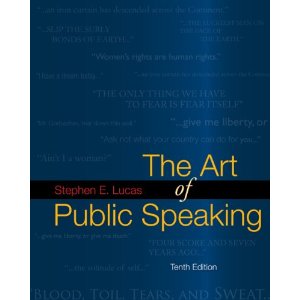
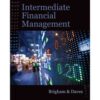
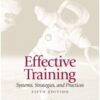
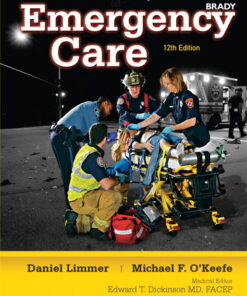



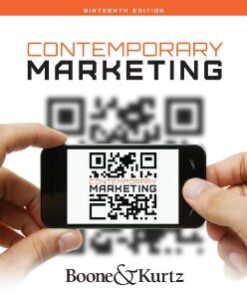


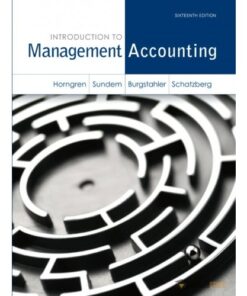
Reviews
There are no reviews yet.